Archivo de noticias y eventos
151 - 200 de un total de 2404
También puede acceder a la lista de noticias publicadas en los medios relacionadas con el Instituto de Astrofísica de Andalucía - CSIC.
Pages
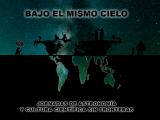
|
10/06/2024
Bajo un mismo cielo Actividad realizada conjuntamente con tres ONG: Acción en red; Granada Acoge y Provivienda |

|
20/06/2024 - 12:00
Mujer en la Ingeniería: Avances y Retos En esta conferencia presentaremos, en primer lugar, una panorámica de la situación actual de la mujer en las STEM y en particular en la ingeniería, tratando de analizar qué factores pueden tener una mayor influencia en la situación actual. A continuación trataremos brevemente la educación de la mujer en los dos últimos siglos. Destacaremos el hecho de como las formas de educar a la mujer están directamente relacionadas con el trabajo que... Dr. Laura Roa |
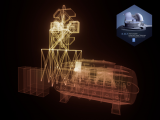
|
05/06/2024
Acuerdan la construcción del instrumento ANDES para el telescopio gigante europeo ELT El Instituto de Astrofísica de Andalucía (IAA-CSIC) participa tanto en su desarrollo tecnológico como en sus objetivos científicos. |

|
27/06/2024 - 12:30
Multiple components in the protostellar system HH 212: Infalling envelope, nested shell, MHD disk winds, and free wind gas I will present the Atacama Large Millimeter/submillimeter Array Band 7 observations at ~24 au spatial resolution of the CO (J=3-2) and H13CO molecular lines emission of the protostellar system HH 212 and compare them with the emission of the SiO (J=8-7) and SO (J=8-7) molecular lines. From the large to small scale, previous observations have detected the infalling envelope, CO outflow shell, SO disk wind, SiO expanding shell and jet in the... Dr. Alejandro López-Vázquez |
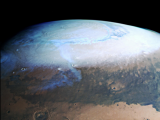
|
28/05/2024
En Marte nieva más de lo esperado Investigadores del IAA-CSIC lideran un nuevo método para medir las variaciones de nieve y escarcha de dióxido de carbono en la superficie de Marte. Los primeros resultados indican que el espesor de nieve depositado es hasta dos órdenes de magnitud mayor de lo estimado. |

|
25/06/2024 - 11:00
Intersexionality, a key work for diversity? Since we are children we have been taught what we are and we learn how to fit into a set of infinite boxes. Each of these boxes defines us and, at the same time, can be used to discriminate against us, in life and at work. Diversity exists and it could be an advantage for our society. As scientists we should understand how to take care of diversity and use it to improve our work and life quality. One of the main problems in the past has been... Dr. Eleonora Fiorellino |
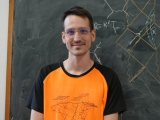
|
23/05/2024
Julio Arrechea Rodríguez, Premio SEA Tesis 2024 El Premio SEA Tesis 2024 en astronomía y astrofísica se ha concedido a Julio Arrechea Rodríguez por la tesis “Hydrostatic equilibrium in the semiclassical approximation”, realizada en el Instituto de Astrofísica de Andalucía (IAA-CSIC) |
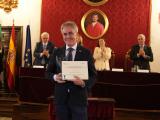
|
17/05/2024
El IAA-CSIC recibe el premio a la Internacionalización otorgado por el Consejo Social de la UGR El Instituto de Astrofísica de Anadalucía (IAA-CSIC) ha recibido el Premio del Consejo Social a instituciones, empresas u organizaciones que se distingan especialmente por sus acciones en el ámbito de la internacionalización estratégica orientadas al desarrollo de la Universidad de Granada, o del tejido social y productivo de Granada. |

|
15/05/2024
Hallado un planeta de tipo terrestre en una estrella enana ultrafría Investigadores del IAA-CSIC participan en el descubrimiento de uno de los escasos sistemas planetarios conocidos en este tipo de estrellas En los resultados, publicados hoy en Nature Astronomy, han contribuido los observatorios de Sierra Nevada y de Calar Alto |
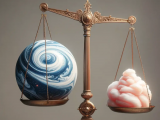
|
14/05/2024
Descubierto un planeta gigante tan ligero como el algodón de azúcar El Instituto de Astrofísica de Andalucía (IAA-CSIC) colidera el estudio del segundo planeta más ligero descubierto hasta la fecha |
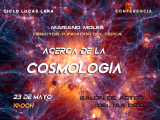
|
23/05/2024 - 19:00
Acerca de la Cosmología La Cosmología como ciencia empírica comenzó en los años 20 del pasado siglo. Desde entonces varios hitos observacionales han inspirado y sostenido el mejor modelo cosmológico que nos hemos podido dar. Sin embargo la materia y la energía oscura, la masa de los neutrinos, y otros nuevos datos observacionales nos obligan a replantearnos algunas preguntas y explorar, quizás, otras aproximaciones a la pregunta de cómo se formó y evoluciona... Mariano Moles |
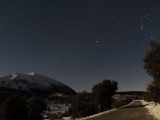
|
06/05/2024
La Oficina de Calidad del Cielo del IAA-CSIC acredita la calidad de los cielos nocturnos del Geoparque de Granada El Instituto de Astrofísica de Andalucía ha llevado a cabo el trabajo científico por encargo de la Diputación de Granada El estudio posicionará al Geoparque como destino preferente de astroturismo |
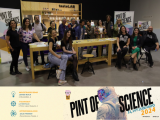
|
06/05/2024
El festival Pint of Science organiza 18 charlas de divulgación científica en los bares de Granada El festival internacional de divulgación científica se celebrará los días 13, 14 y 15 de mayo en toda España, con entrada gratuita En Granada, Pint of Science se celebrará en los bares La Tertulia, Lemon Rock y Sala Premier El programa completo puede consultarse en https://pintofscience.es/events/granada |

|
06/06/2024 - 12:30
A complex network perspective on Delta Scuti stars We apply horizontal visibility graphs (HVG) to study the complex network behavior for the delta Sct stars’ light curves observed by TESS. The delta Sct stars are pulsating stars with spectral types A0-F5 and intermediate masses between low-mass stars (≤ 1 Msun) and high-mass stars (≥ 2 Msun). They pulsate in low-order pressure modes and have dominant pulsation frequencies in the 5-80 d−1 range. The high amplitude delta Sct stars (called HADS),... Dr. Elham Ziaali |
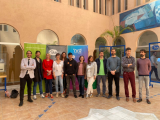
|
24/04/2024
Científicos ciudadanos de Granada miden el ‘cante’ de las estrellas y la calidad del aire de la ciudad Investigadores del Instituto de Astrofísica de Andalucía y de la Universidad de Granada lideran dos proyectos de ciencia ciudadana donde traducirán a sonidos datos procedentes de las estrellas Delta Scuti y elaborarán un mapa de contaminación atmosférica en la capital. Ambas iniciativas forman parte del proyecto ‘Andalucía + ciencia ciudadana’, impulsado por la Consejería de Universidad, Investigación e Innovación y coordinado por Fundación... |
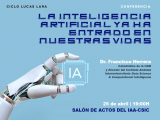
|
25/04/2024 - 19:00
La Inteligencia artificial ya ha entrado en nuestras vidas La conferencia tratará tres aspectos fundamentales de la multiplicidad prismática de la IA: a) no va a llegar, ya está aquí, con nosotros, desde hace tiempo; b) la IA generativa, ¿ayudante o sustituto?; y c) la eclosión de la IA, riesgos y regulación. Prof. Dr. Francisco Herrera |
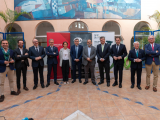
|
08/04/2024
Éxito de la I Reunión IAA - DONES El I Encuentro IAA-DONES confirma las oportunidades empresariales de la economía del conocimiento Cerca de un centenar de profesionales se han reunido en este primer encuentro marcado por la búsqueda de iniciativas de colaboración científicas, tecnológicas, sociales, empresariales e industriales. |
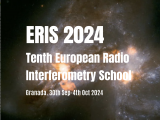
|
30/09/2024 - 04/10/2024
https://www.granadacongresos.com/eris2024 Granada |

|
23/04/2024 - 18/06/2024
https://indico.iaa.csic.es/event/15/ Granada |
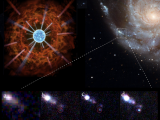
|
27/03/2024
Cazada una estrella supergigante roja recién colapsada Detectada la explosión de una estrella supergigante apenas una hora después de su colapso. Los observatorios amateur han sido clave en la detección de la supernova en sus fases iniciales. El IAA-CSIC participa de este estudio publicado en Nature a través de su red global de telescopios robóticos BOOTES |
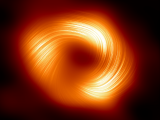
|
27/03/2024
Revelados intensos campos magnéticos espirales en el borde del agujero negro del centro de nuestra galaxia La colaboración del Telescopio Horizonte de Sucesos (EHT) ha presentado la primera imagen en luz polarizada de SgrA*, el agujero negro supermasivo situado en el centro de nuestra galaxia. Esta imagen revela la presencia de intensos y organizados campos magnéticos que emergen en forma de espiral desde el borde mismo del agujero negro. |
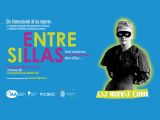
|
18/03/2024
ENTRE SILLAS: LAS NUEVAS CURIE”, UNA INVITACIÓN A TRAVÉS DEL TEATRO A REFLEXIONAR: 6 MUJERES, 3 ENTREVISTAS, 2 SILLAS El teatro del Centro Federico García Lorca acogerá esta actividad, enmarcada dentro de la conmemoración del 8M, el día 22 de marzo a las 20.00 horas. Se trata de conocer lo que supone ser una anomalía femenina en un mundo de hombres a través de la figura de Madame Curie |
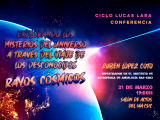
|
21/03/2024 - 19:00
Explorando los misterios del Universo a través del viaje de los desconocidos Rayos Cósmicos Los rayos cósmicos -partículas cargadas ultrarrelativistas que bombardean la Tierra desde todas los puntos del cielo- son invisibles al ojo humano pero contienen información sobre los procesos más fundamentales del Universo, tales como su creación y evolución. Estas partículas se producen en los procesos más violentos del Universo y su observación directa no nos da información acerca de... Rubén López-Coto |
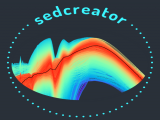
|
17/06/2024 - 18/06/2024
https://indico.iaa.csic.es/event/10/ Granada |
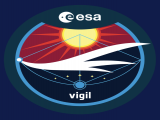
|
12/03/2024 - 15/03/2024
https://form.jotform.com/240521968228359 Granada |

|
12/03/2024
Espacio 3 organiza el primer “Micro Abierto” de Ciencia de Granada en la Sala Aliatar “Abierto por defecto, y ven a contar tus movidas” tendrá la idea de “Libertad” como hilo conductor del proyecto de Ciencias y Artes Escénicas que incorpora nuevos formatos en su cita de marzo |
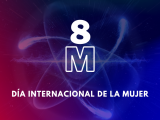
|
04/03/2024
8M: Día Internacional de la Mujer 2024 El Instituto de Astrofísica de Andalucía participa en la celebración del Día Internacional de la Mujer celebrando la mesa redonda "Vocaciones en áreas STEM: El caso de la Física" y participando en la organización del II Encuentro Científicas y Empresarias de Granada |
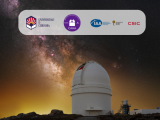
|
04/03/2024
El Observatorio de Calar Alto, el IAA-CSIC y la Universidad de Córdoba firman un acuerdo para el desarrollo de la astronomía El Centro Astronómico Hispano en Andalucía (CAHA), el Consejo Superior de Investigaciones Científicas (CSIC), a través del Instituto de Astrofísica de Andalucía, y la Universidad de Córdoba han firmado un protocolo de actuación para desarrollar actividades educativas y científico-tecnológicas en el ámbito de la astronomía. Calar Alto ya suma cuatro acuerdos de colaboración con universidades públicas andaluzas. |

|
11/07/2024 - 12:30
Dust in protoplanetary disks, (still) that great unknown Planetary systems are a side effect in the formation of a star. Planets are believed to be just simply the last remaining of dusty circumstellar disks which is formed around the protostar at very early stages. Thus, understanding how planets are formed requires to understand how dust evolve in these disks. It is less than ten years that we have the possibility of mapping the dust distribution in protoplanetary disks with great detail with... Carlos Carrasco González |

|
14/05/2024 - 12:30
New possibilities for atmospheric analysis with Monte Carlo In recent years, significant advancements have been made in scientific computing utilizing the Monte Carlo method, particularly at the intersection of two key communities: the heat transfer community and the computer graphics community. The first breakthrough is that the computation time required to solve radiative transfer becomes invariant, whether the ground is described by a single building or thousands of them, whether the 3D clouds are... Dr. Yannis Inouk Nyffenegger Péré |

|
30/04/2024 - 12:30
The art of astrophysical measurements: An elementary lecture on photon counting and S/N Have you ever dared to understand how many photons are detected by your camera when you are pointing the telescope to the sky? Is the action of the spectrograph fully understood when analyzing those photons? Do typical image formation rules hold when studying the polarization of light? All these are a few examples of questions addressed by researchers when designing instruments, which are later constrained by technological capabilities. This... Dr. José Carlos del Toro Iniesta |

|
11/04/2024 - 12:30
LP791-18d as a case study for outgassing rocky exoplanets Over the past three decades, the discovery of over five thousand exoplanets has opened avenues for atmospheric characterization, now feasible for a select subset through spectroscopic observations paired with Bayesian inference techniques. These exoplanetary atmospheres serve as crucial windows into planetary formation and evolutionary histories. Achieving accurate interpretations demands a comprehensive approach, advancing theory and modeling... Dr. Leonardos Gkouvelis |

|
04/04/2024 - 12:30
The Earthbound Fate of Meteor Phenomena Understanding meteor phenomena is essential for promptly and effectively recovering meteorites, predicting meteor showers, studying atmospheric properties, and assessing the threat posed by space objects to both in-orbit and ground-based infrastructure. By observing and interpreting meteor phenomena, we can predict impact consequences and efficiently locate and identify surviving meteorite fragments on the ground. Through dimensional analysis,... Dr. Maria Gritsevich |
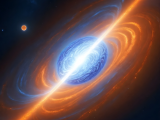
|
21/02/2024
Observan por primera vez la formación de ‘tierras raras’ tras la fusión de dos estrellas de neutrones Un estudio con participación del Instituto de Astrofísica de Andalucía (IAA-CSIC) muestra una kilonova como fuente de elementos pesados, incluyendo las preciadas ‘tierras raras’ El trabajo, publicado en ‘Nature’, destaca este tipo de fenómenos explosivos y extremadamente energéticos como el entorno idóneo para la formación de metales más pesados que el hierro y la plata |
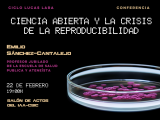
|
22/02/2024 - 19:00
Ciencia abierta y la crisis de la reproducibilidad La ciencia es una fantástica y gigantesca empresa humana en la que se estima que están implicadas mas de nueve millones de personas y en la que actualmente se invierte en el mundo más de un billón y medio de euros anualmente. El método científico es el instrumento que ha caracterizado a la ciencia para alcanzar su objetivo de conocer y comprender el mundo natural que nos rodea. Emilio Sánchez-Cantalejo |
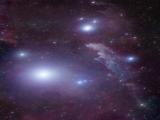
|
04/03/2024 - 05/03/2024
https://indico.iaa.csic.es/event/14/ Granada |

|
25/04/2024 - 12:30
Artificial Intelligence in Service of Galaxy Evolution Research: A Personal Journey In this seminar, I will present my personal exploration of the application of artificial intelligence in the study of galaxy evolution. Since the early 2010s, the fields of machine learning and deep learning have undergone unprecedented development, marked by enhancements in algorithms and hardware advancements. This progress has significantly influenced various scientific domains. Concurrently, the increasing volume and complexity of data... Dr. Ginés Martínez Solaeche |
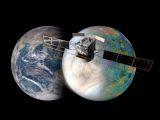
|
06/02/2024
La Agencia Espacial Europea aprueba la construcción de EnVision, la próxima gran misión a Venus El Instituto de Astrofísica de Andalucía (IAA-CSIC) participa tanto en su desarrollo tecnológico como en su retorno científico. La misión estudiará su núcleo y su atmósfera para comprender su actividad volcánica y su clima y averiguar cómo este gemelo de la Tierra se volvió tan inhóspito. |
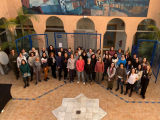
|
31/01/2024
Día Internacional de la Mujer y la Niña en la Ciencia 2024 El Instituto de Astrofísica de Andalucía se suma un año más a la celebración del Día Internacional de la Mujer y la Niña en la Ciencia, que tiene como objetivo visibilizar la labor científica de las mujeres y fomentar las vocaciones en las niñas |
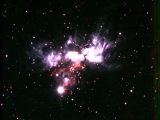
|
29/01/2024
La región AFGL 5180, cuna de estrellas gigantes en formación, revela sus secretos en el infrarrojo El Instituto de Astrofísica de Andalucía (IAA-CSIC) encabeza un estudio que alumbra, con un detalle inédito, una región de formación estelar masiva |

|
27/02/2024 - 12:30
Unraveling the Gamma-ray emission in radiogalaxies and their jets Radio-galaxies are a minority among all extragalactic sources detected in gamma-rays, yet they have excellent potential to study particle acceleration and non-thermal emission in AGN jets. In contrast with blazars, which have jets aligned with the line-of-sight, radio-galaxies have a smaller Doppler boosting factors. The implications are important: First, the distance at which they are detectable in gamma-rays is smaller. Second, the thermal... Mireia Nievas Rosillo |

|
24/01/2024 - 24/01/2024
https://www.iaa.csic.es/meetings/cosmic-dust-workshop Granada |

|
21/05/2024 - 12:30
Coloquio SO: Spectroscopy's Role in Stellar Astrophysics To characterize a star, the stellar fundamental parameters such as mass, radius, metal abundance, and effective temperature should be known. Direct measurements of these parameters, especially for single stars, are quite challenging, and indirect methods are often employed to obtain these characteristics. The most effective method for determining these parameters is spectroscopy, which is an analysis technique of spectra. It allows us to... Dr. Filiz Kahraman Aliçavuş |

|
09/04/2024 - 12:30
Laboratory Research on the Atmospheric Impact of Spacecraft Re-entry Debris: Perspectives and Future Challenges The rapid growth of space debris, especially in Low Earth Orbit (LEO), poses a rising risk to both space operations and Earth's atmosphere. Debris fragments, even minuscule in size, can cause significant damage due to their high orbital speeds. To mitigate risks, controlled re-entry of debris is common practice, but this introduces a new concern: the increasing mass of human-made materials injected into the atmosphere. As satellites and rocket... Dr. Antonio Ocaña |

|
07/03/2024 - 12:30
SO colloquium: Stars and their close-by planets: clues of magnetic interactions Stars interact with their close-in planets through the gravitational and magnetic fields and with their radiation. After a general introduction to those interactions, I shall review some observational clues of magnetic star-planet interactions considering data obtained in the optical, X-ray, and radio domains. Based on a stellar force-free coronal field or the excitation of Alfven waves by an orbiting planet, some analytical models will be... Dr. Antonino Francesco Lanza |

|
21/03/2024 - 12:30
The Local Volume Mapper, state of the art The LVM, one of the three surveys that conform the SDSS-V project, is the first Integral Field Spectroscopy survey of the Local Group, including and unique mapping of the Milky Way. It started survey operations in October 2023, with some early science observations on cheery-peaked targets, and the first observations on the foreseen survey itself. I present here the status of the survey, including the state of the major contributions from the IA... Dr. Sebastián Sánchez |

|
14/03/2024 - 12:30
SO Colloquium: Spatially resolved spectroscopy properties of low-redshift galaxies We summarize here some of the results reviewed recently by Sanchez (2020) and Sanchez et al. (2021) comprising the advances in the comprehension of galaxies in the nearby universe based on integral field spectroscopic galaxy surveys. We review our current knowledge of the spatially resolved spectroscopic properties of low-redshift star-forming galaxies (and their retired counterparts) using results from the most recent optical integral field... Dr. Sebastián Sánchez |

|
19/02/2024 - 23/02/2024
https://indico.iaa.csic.es/event/11/ Granada |
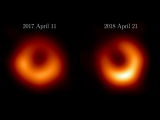
|
18/01/2024
M87*, un año después: la persistente prueba de la sombra de un agujero negro El Instituto de Astrofísica de Andalucía (IAA-CSIC) participa en la colaboración internacional que confirma la existencia de un anillo brillante que corresponde a la sombra del agujero negro de la galaxia Messier 87 La estabilidad del diámetro del anillo respecto a los datos obtenidos en 2017 respalda la conclusión de que el agujero negro M87 estaría descrito de forma correcta por la teoría de la relatividad general |
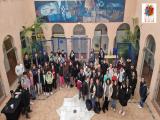
|
17/01/2024
Arrancan las sesiones del proyecto PIIISA 23/24 El IAA-CSIC participa con cinco proyectos de investigación |